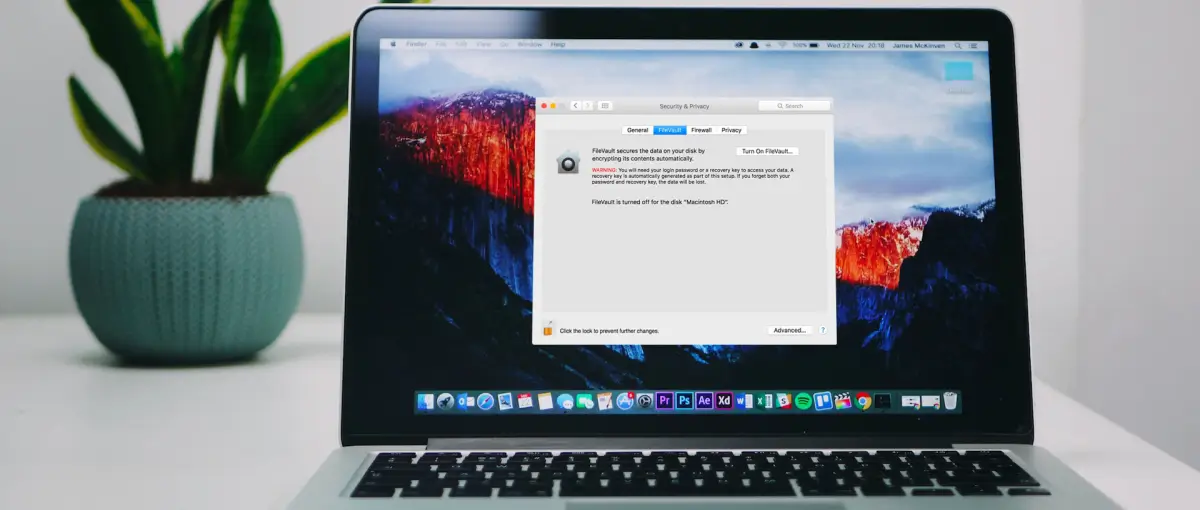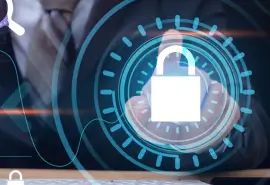Threats to our personal or private data continue to emerge and evolve. Encryption remains one of the most reliable methods of safeguarding sensitive data from unauthorized access. As part of its commitment to protecting users, Apple provides encryption technology that makes MacBooks more secure than ever. Secure Data Recovery, the authority in RAID, SSD, and hard drive recovery, explains how to encrypt files on a MacBook and keep your data safe.
Basics of MacBook Encryption
Encryption encodes plain data into an unreadable format via algorithms to prevent unauthorized access. After encryption, only authorized parties can access the original data with the unique decryption key. As a result, encryption offers protection even if the MacBook is infected with a virus or stolen since deciphering encrypted data is extremely difficult without the appropriate credentials.
The encryption process varies depending on the device and method.
Apple’s macOS offers several encryption options for MacBook users, including full-disk and file-level encryption. Understanding how to encrypt the MacBook’s storage device or its most important files can ensure that confidential data does not fall into the wrong hands.
What is FileVault?
FileVault is Apple’s primary encryption tool. It is an advanced security feature that provides full-disk encryption with XTS-AES-128 algorithms and uses a 256-bit key.
In short, FileVault encodes each 128-bit block of data across the drive with an Advanced Encryption Standard (AES) algorithm, then further modifies the block in a mode that ensures identical data does not share the same ciphertext. FileVault also generates a longer 256-bit key to deter cybercriminals from launching brute-force attacks.
Encrypting a recent MacBook’s solid-state drive (SSD) is one of the best methods for securing the computer’s data. Doing so encrypts documents, images, videos, downloads, and temporary or system files containing sensitive data. The encrypted data is inaccessible and unreadable without the proper password or recovery key, safeguarding the drive’s contents from malicious actors.
MacBooks with FileVault enabled require log-ins upon startup. When setting up FileVault, users also have the option to create a recovery key, which can access the drive’s encrypted data if they forget a passcode or passphrase. In addition, with Find My Mac activated in iCloud, the ability to unlock devices and reset passwords is linked with an Apple ID, supplying another layer of security.
FileVault encrypts the existing data on the MacBook’s startup drive when enabled. The program will automatically encrypt all data saved to that device in the future. Once the user logs in, FileVault seamlessly decrypts stored data. Without authorized credentials, the encrypted data remains inaccessible and unreadable. There should not be a noticeable lag during operation, as FileVault utilizes real-time encryption and decryption methods.
How To Encrypt MacBook With FileVault
Follow these steps to activate FileVault on a MacBook with macOS Ventura or subsequent versions:
- Open the Apple menu. It is located in the top-left corner of the screen.
- Choose System Settings.
- Select Privacy & Security in the sidebar.
- Find FileVault. Users might need to scroll down.
- Click Turn On. Users might need to enter an administrator password.
- Choose between the iCloud Account or Recovery Key options for unlocking the encrypted drive and resetting forgotten passwords.
- Click Continue.
Once complete, FileVault will begin encrypting the MacBook’s data. Encryption could take some time, depending on the amount of data on the storage device. Users can remain on their MacBook during the encryption process. If an interruption does occur, FileVault will resume in the background at a later time.
Encrypt Specific Files on MacBook
MacBooks can also encrypt specific files as an alternative to full-disk encryption. File-level encryption is helpful in situations where users need to protect sensitive data and do not want to encode the entire drive.
Users can create an encrypted disk image to encode specific files or folders outside the main directory. Disk images are digital replicas of physical blocks. They function as exact copies of a system’s data. Encrypted disk images ensure only users with the correct credentials can access certain information. They also provide a practical method for securely transferring files between systems or users. By storing files within an encrypted disk image, an individual can share data with those that have a decryption key.
However, there are some considerations for using encrypted disk images. Users cannot restore the encrypted data if they forget their password. Apple does not offer data recovery services for FileVault or encrypted disk images. As such, password management is crucial.
How To Create An Encrypted Disk Image
MacBooks feature a built-in drive management tool. Disk Utility can create encrypted disk images with the following steps:
- Open Finder.
- Choose Applications.
- Select Utilities.
- Launch Disk Utility.
- Click File in the menu.
- Scroll over New Image.
- Select Blank Image.
A box will appear, prompting users to fill out several fields, including:
- Save As: Names the specific file(s)
- Tags: Enters Finder tags for the disk image
- Where: Assigns a destination to the disk image
- Name: Names the mounted disk image
- Size: Selects the maximum amount of data the disk image stores
- Format: Structures the disk image, as outlined in the table below
- Encryption: Chooses an encryption standard for the disk image, with 128-bit being faster but less secure than 256-bit
- Partition: Sets a partition layout for the disk image, with GUID Partition Map serving as the default
- Image Format: Configures the disk image format, with a sparse disk image capable of expanding to the chosen maximum size
| Format | Recommended Usage |
|---|---|
| APFS | Designed for macOS High Sierra or later |
| Mac OS Extended | Designed for macOS Sierra or earlier |
| ExFAT | Designed for cross-platform usage with images larger than 32 GB |
| MS-DOS (FAT) | Designed for cross-platform usage with images smaller than 32 GB |
Save the settings after filling out the fields. Disk Utility will ask users to create and confirm a password. Consider saving the password to the iCloud keychain.
Disk Utility will then create the disk image at the set location. It will also appear in the Disk Utility sidebar.
Open the disk image and drag files into the window to encrypt data.
Eject the disk image from the sidebar after adding files. At that point, the MacBook will encrypt the data. To access the encrypted files, open the disk image and re-enter the password.
Third-Party Encryption Options
Power users might need specific encryption methods that macOS does not support. In those cases, Apple has several third-party options. These applications often provide distinct features and varying degrees of security, allowing users to select the encryption method that suits their needs.
Third-party encryption applications have different algorithms, key lengths, and industry-specific standards. Some applications have simpler, user-friendly interfaces. Free, open-source applications also exist.
Though macOS built-in tools will suffice for most users, there is a clear case for third-party applications in certain instances. Unlike FileVault, which encrypts the entire startup drive, third-party applications can cede more control to users regarding data protection strategies. In addition, some third-party applications even have secure erasure functions, as unsanitized drives pose significant risks. Overwriting encrypted files with random data before disposal decreases the risk of exposing valuable information.
Encryption and MacBook Data Recovery
Encryption is critical to protecting personal or private data on a MacBook. However, you must still be careful when handling encrypted files.
While encrypting data with FileVault or creating an encrypted disk prevents unauthorized parties from obtaining your confidential files, it also impedes data recovery engineers from accessing the device’s contents. Do not forget your password or recovery key. Without those credentials, you cannot decrypt stored data. You will lose your files forever. Recovering data from a MacBook with an encrypted APFS or Mac OS Extended container is almost impossible.
However, with valid credentials, our Mac data recovery experts can still retrieve encrypted files from a damaged or defective SSD. We have invested in specialized hardware and software to provide the best possible Apple laptop data recovery.
Since 2007, the professionals at Secure Data Recovery have encountered every failure scenario and resolved over 100,000 cases, including ones involving encrypted files. In that time, we have maintained a 96% success rate and continue to offer a “No Data, No Recovery Fee” guarantee. You get your data back, or pay nothing.
Call us 24/7 at 800-388-1266 or request help to start a case.






